9 Best Herbal Tinctures For Mouth Ulcers
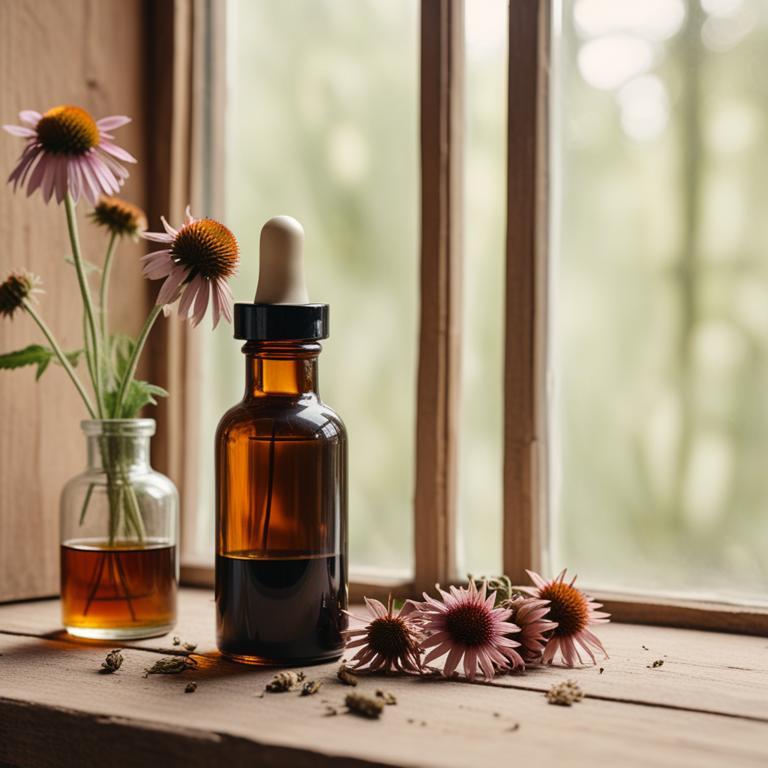
Herbal tinctures for mouth ulcers are highly concentrated liquid extracts made from plants, used to treat and soothe mouth ulcers.
These tinctures offer several benefits, including rapid relief from pain and inflammation, as well as promoting healing and preventing infection.
Examples of herbal tinctures used to treat mouth ulcers include Aloe vera, Echinacea, Calendula, and Myrrh, which are known for their anti-inflammatory and antibacterial properties, while others such as Licorice root, Slippery elm, and Marshmallow root provide a protective barrier to the affected area, reducing discomfort and promoting healing.
Additionally, tinctures like Sage and Plantain are used to reduce inflammation and kill bacteria, making them effective in treating mouth ulcers.
According to "Supportive care in cancer : official journal of the Multinational Association of Supportive Care in Cancer", tinctures for mouth ulcers may be effective, as Matricaria chamomilla (chamomilla) presented promising results, such as a reduction in severity and lesion incidence with improved pain symptomatology.
Below there's a list of the 9 best herbal tinctures for mouth ulcers.
- 1. Aloe barbadensis tinctures
- 2. Aloe vera tinctures
- 3. Calendula officinalis tinctures
- 4. Symphytum officinale tinctures
- 5. Hydrastis canadensis tinctures
- 6. Achillea millefolium tinctures
- 7. Echinacea purpurea tinctures
- 8. Glycyrrhiza glabra tinctures
- 9. Silybum marianum tinctures
Also you may be interested in...
TODAY'S FREE BOUNDLE
Herb Drying Checklist + Herbal Tea Shopping List + Medicinal Herbs Flashcards
Enter you best email address below to receive this bundle (3 product valued $19.95) for FREE + exclusive access to The Aphotecary Letter.
$19.95 -> $0.00
1. Aloe barbadensis tinctures

Aloe barbadensis tinctures, derived from the gel of the Aloe vera plant, have been traditionally used to treat mouth ulcers due to their anti-inflammatory, antimicrobial, and antioxidant properties.
The bioactive constituents present in Aloe barbadensis tinctures, such as aloin, aloe-emodin, and vitamins A, C, and E, help to soothe and heal the ulcers by reducing pain, inflammation, and bacterial growth.
These constituents work together to promote a healthy environment for the ulcers to heal, allowing for faster recovery and reducing the risk of complications.
The benefits of using Aloe barbadensis tinctures to treat mouth ulcers include reduced pain and discomfort, accelerated healing, and prevention of secondary infections, making it a popular natural remedy for this common oral health issue.
Related Study
According to "Current drug discovery technologies", Aloe barbadensis tinctures for mouth ulcers may have potential anti-ulcer activity, as Aloe vera was one of the natural herbs identified in the study to have anti-ulcer properties.
2. Aloe vera tinctures
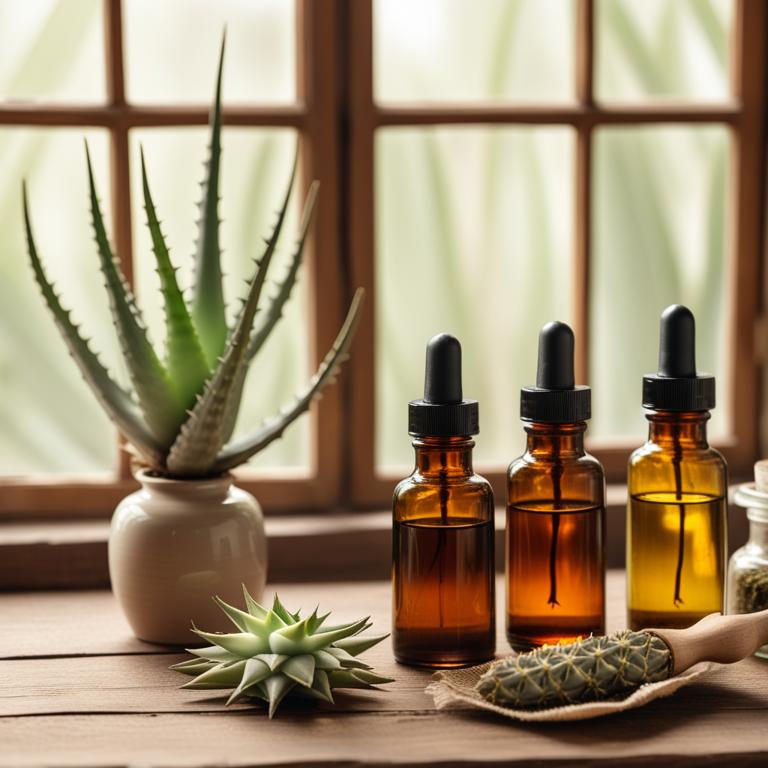
Aloe vera tinctures have been traditionally used to treat mouth ulcers due to their anti-inflammatory, antimicrobial, and soothing properties.
The bioactive constituents present in aloe vera, such as aloin, aloe-emodin, and acemannan, help to reduce inflammation, promote wound healing, and prevent bacterial infections, thereby alleviating the symptoms of mouth ulcers.
Aloe vera tinctures work by creating a protective barrier on the affected area, reducing pain and discomfort, and promoting the growth of new tissue, which helps to accelerate the healing process.
The benefits of using aloe vera tinctures to treat mouth ulcers include rapid relief from pain and discomfort, reduced risk of infection, and accelerated healing, making it a popular natural remedy for this common ailment.
Related Study
According to "Journal of education and health promotion", Aloe vera tinctures for mouth ulcers were found to be an effective and safe alternative for improving clinical oral health outcomes in adolescents.
3. Calendula officinalis tinctures

Calendula officinalis tinctures have been used traditionally to treat mouth ulcers, and its anti-inflammatory properties help to reduce pain and discomfort associated with this ailment.
The bioactive constituents, including triterpenoids and carotenoids, in Calendula officinalis tinctures have been shown to promote wound healing and reduce inflammation, thereby aiding in the treatment of mouth ulcers.
By applying Calendula officinalis tinctures topically, the bioactive constituents can help to soothe and protect the affected area, accelerating the healing process and reducing the risk of infection.
The benefits of using Calendula officinalis tinctures to treat mouth ulcers include reduced pain, accelerated healing, and prevention of secondary infections, making it a popular natural remedy for this common condition.
Related Study
According to "Supportive care in cancer : official journal of the Multinational Association of Supportive Care in Cancer", Calendula officinalis tinctures for mouth ulcers improved the lesions in patients with oral mucositis.
4. Symphytum officinale tinctures
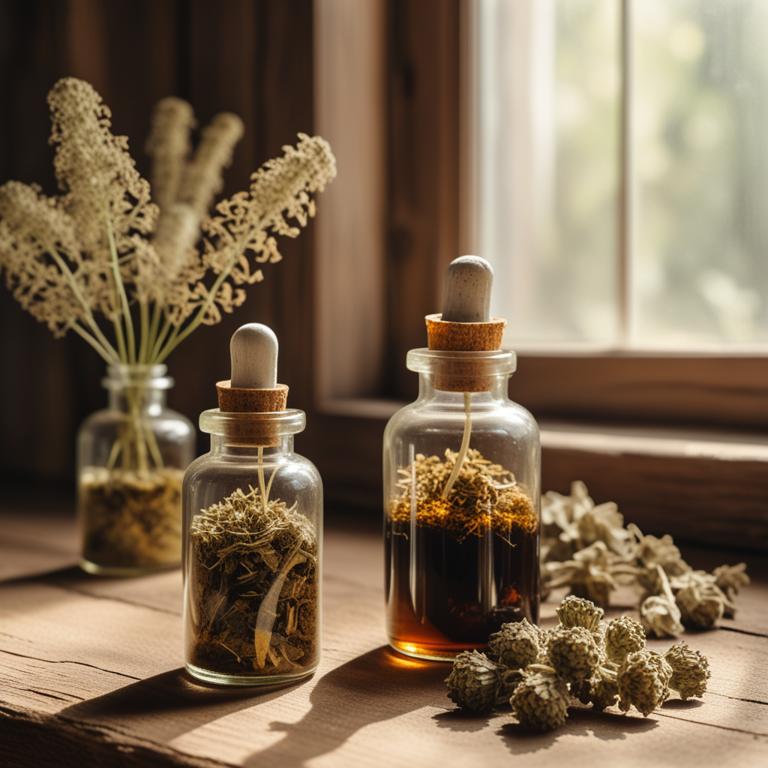
Symphytum officinale tinctures have been traditionally used to treat mouth ulcers due to their anti-inflammatory, antimicrobial, and soothing properties.
The bioactive constituents of this herbal preparation, such as allantoin and rosmarinic acid, help to reduce inflammation, promote wound healing, and protect the mucous membranes from further irritation.
By applying Symphytum officinale tinctures to the affected area, it helps to accelerate the healing process, reduce pain and discomfort, and prevent the formation of new ulcers.
The benefits of using Symphytum officinale tinctures to treat mouth ulcers include natural and non-invasive healing, reduced recovery time, and prevention of recurring ulcers.
Related Study
According to "Revista de chirurgie, oncologie, radiologie, o. r. l., oftalmologie, stomatologie. Seria: Stomatologie", Symphytum officinale tinctures have a good repair effect, especially after surgical procedures, which may be beneficial for healing mouth ulcers.
5. Hydrastis canadensis tinctures
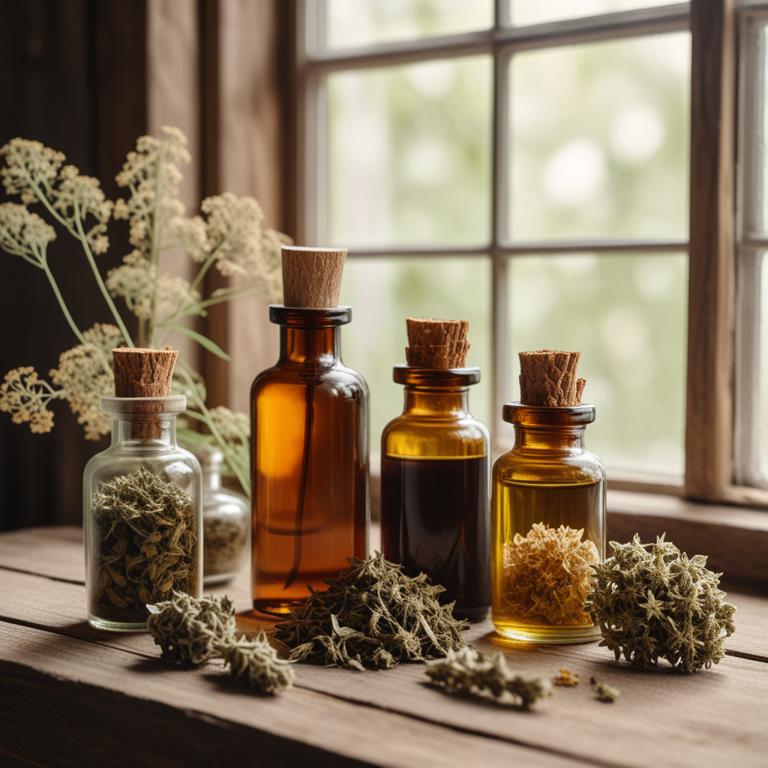
Hydrastis canadensis tinctures, derived from the goldenseal plant, have been traditionally used to treat mouth ulcers due to their anti-inflammatory and antimicrobial properties.
The bioactive constituents, including berberine and hydrastine, in these tinctures help to reduce the severity and duration of mouth ulcers by inhibiting the growth of bacteria and viruses that cause the ulcers.
By reducing inflammation and promoting the healing of the mucous membranes, Hydrastis canadensis tinctures provide relief from the painful symptoms associated with mouth ulcers, such as burning, swelling, and difficulty swallowing.
The benefits of using Hydrastis canadensis tinctures to treat mouth ulcers include rapid relief, reduced risk of infection, and promotion of a healthy oral environment.
6. Achillea millefolium tinctures
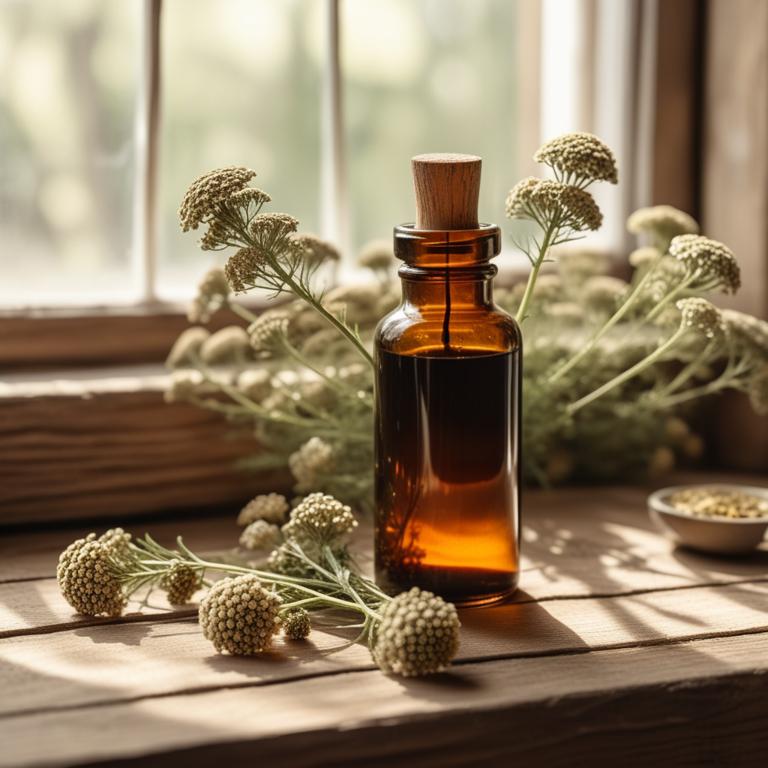
Achillea millefolium tinctures have been traditionally used to treat mouth ulcers due to their anti-inflammatory, antimicrobial, and antiseptic properties.
The bioactive constituents of this herbal preparation, including flavonoids, sesquiterpenes, and phenolic acids, help to reduce inflammation and promote healing in the affected area.
By inhibiting the growth of bacteria and reducing oxidative stress, Achillea millefolium tinctures help to alleviate the symptoms of mouth ulcers, such as pain, discomfort, and difficulty swallowing.
The benefits of using Achillea millefolium tinctures to treat mouth ulcers include reduced healing time, minimized risk of infection, and alleviated discomfort, making it a natural and effective remedy for this common ailment.
7. Echinacea purpurea tinctures

Echinacea purpurea tinctures have been traditionally used to treat mouth ulcers, a condition characterized by painful sores and lesions in the oral cavity.
The anti-inflammatory and antimicrobial properties of Echinacea purpurea tinctures help to reduce the severity and duration of mouth ulcers by reducing swelling and fighting off bacterial and viral infections that can exacerbate the condition.
The bioactive constituents of Echinacea purpurea tinctures, including alkylamides, glycosides, and phenolic acids, are responsible for its therapeutic effects, which include the inhibition of pro-inflammatory enzymes and the stimulation of the immune system.
By using Echinacea purpurea tinctures, individuals can benefit from the relief of symptoms, reduced risk of complications, and the promotion of oral health, making it a popular natural remedy for mouth ulcers.
8. Glycyrrhiza glabra tinctures

Glycyrrhiza glabra tinctures have been used to treat mouth ulcers due to their anti-inflammatory and antiseptic properties, which help to reduce pain and inflammation, promote healing, and prevent infection.
The bioactive constituents of Glycyrrhiza glabra, including glycyrrhizic acid, flavonoids, and triterpenoids, possess antimicrobial and antioxidant activities that contribute to its therapeutic effects.
By using Glycyrrhiza glabra tinctures, individuals can benefit from a reduction in the severity and duration of mouth ulcers, as well as improved oral health and a decrease in the risk of complications such as secondary infections.
The topical application of Glycyrrhiza glabra tinctures directly to the affected area allows for the direct delivery of its bioactive constituents, promoting effective and targeted treatment of mouth ulcers.
Related Study
According to "Journal of International Society of Preventive & Community Dentistry", Glycyrrhiza glabra tinctures for mouth ulcers have been found to effectively inhibit primary plaque colonizers and periodontal pathogens, exhibiting anti-inflammatory, antioxidant, antibacterial, and astringent action that helps in reducing gingival and periodontal diseases.
9. Silybum marianum tinctures

Silybum marianum tinctures are a herbal preparation used to treat mouth ulcers due to their anti-inflammatory and antiseptic properties.
The tincture helps to treat mouth ulcers by reducing inflammation and preventing infection, thereby promoting faster healing.
The bioactive constituents of Silybum marianum, including flavonoids and silymarin, play a crucial role in treating mouth ulcers by protecting the mucous membrane and reducing pain.
The benefits of using Silybum marianum tinctures to treat mouth ulcers include reduced pain and inflammation, faster healing, and prevention of further infections.